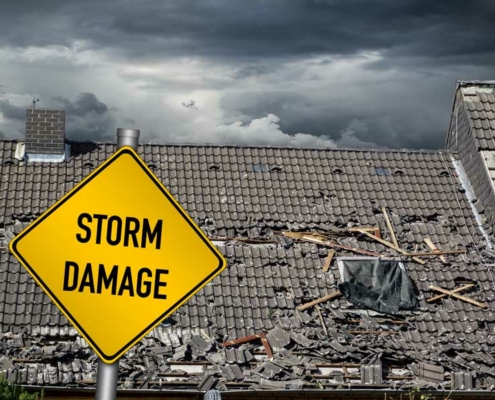The On-Site Inspection Process
During the wind mitigation inspection, an expert will evaluate the property’s mitigation features. The visual inspection consists of two parts. Inspecting the exterior of the home and inspecting the attic. The inspection can be performed in any order but typically our inspectors will follow the order listed here.
Starting at the front left corner of the house and working in a counterclockwise fashion the inspector will look at each window and door opening to determine if it is protected and if so determine the rating of protection. Common protection ratings are Hurricane, Not Rated, and None. Hurricane is the best rating and the only rating recognized for mitigation discounts currently. Not rated typically would be a rating for a window that has a shutter but the shutter has not been tested. The older clamshell awning shutters are a good example of a not-rated protection device.
Also as the inspector walks around the property he is looking to see the shape of the roof. If the roof qualifies as a hip roof it can receive a credit. A hip roof must be 90% or more hip based upon the perimeter of the roof. Usually, we see homes almost receive credit as hip except for a connected flat roof on the back of the home. We have to count any roof that covers living space or ties into the main roof. While looking at the roof from the ground the inspector will note any skylight. Skylights are also considered openings and must be protected as well. When an inspector sees that the home has hurricane shutters usually the next step is to verify the rating.
The hard part of the inspection starts when the inspector goes into your attic. We like to say this is where he earns his paycheck. In the attic, the inspector will use his tools to photograph the roof to wall connections and the roof deck attachment.
The roof structure attaches to the walls of the home thanks to the roof-to-wall connection. A properly installed roof-to-wall connection can prevent the roof from separating from the home in a high wind situation. Common names for these are hurricane clips, single wrap straps, and hurricane straps. There are a couple of requirements that your home must have to get the credit. They must be on every single truss, they cannot be corroded, they must have at least three nails in the truss and they cannot have more than a ½” gap.
The roof itself is usually installed on some type of decking, either plywood or planking. The way this roof decking attaches to the trusses is the roof deck attachment. The inspector will determine what type of decking the home has, the type of fasteners used to attach the decking, and the spacing between the fasteners. The longer the nails are and the closer they are to each other, the more likely the decking is to stay attached during high winds. In order to get credit for this, the home has to be able to resist certain amounts of wind pressure.



41040 US Hwy 27, Suite 2
Davenport, FL 33837